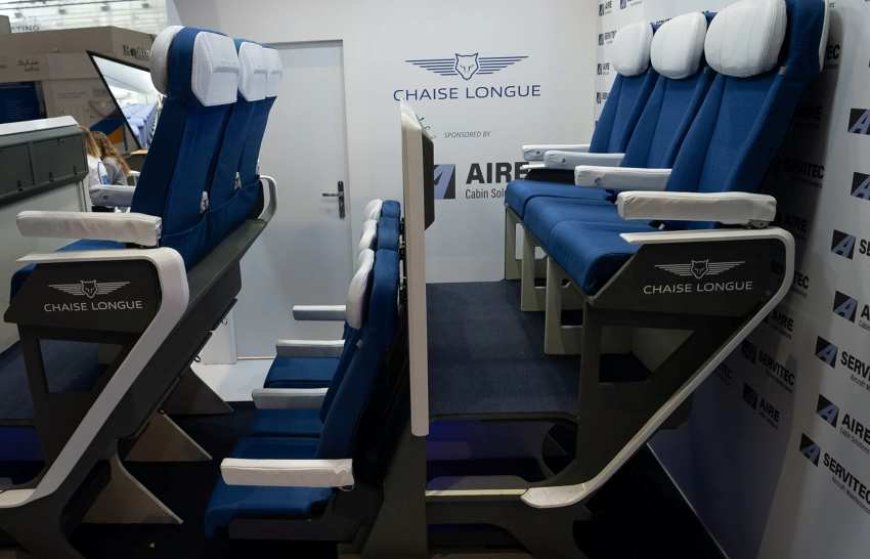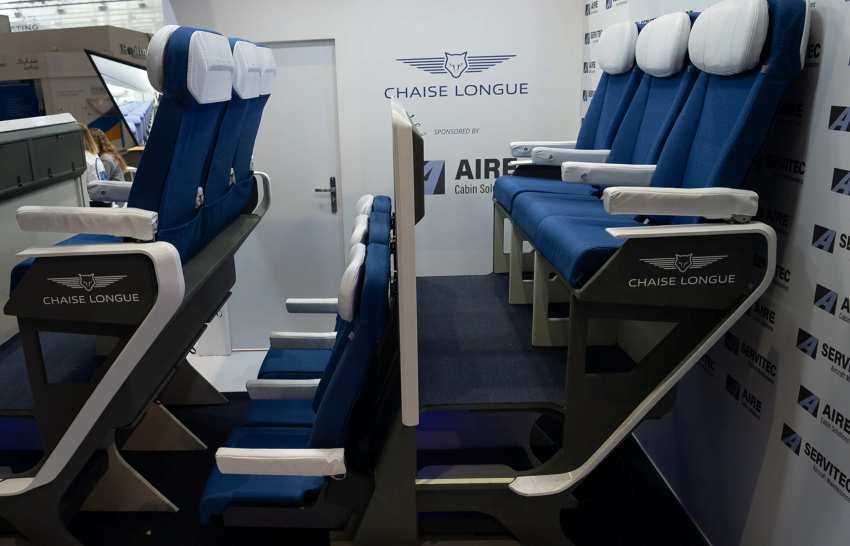Airbus Teams Up with Chaise Longue to Explore Radical Double-Decker Seat Concept: A New Era Of Economy Travel or an Awkward Craze That Could Change Tourism Forever?


In a bold collaboration with aviation startup Chaise Longue, Airbus has introduced an innovative new design that could potentially reshape the future of economy travel. The concept features a double-decker seating arrangement aimed at solving the perennial issue of cramped legroom in the economy class. The new seating configuration is gaining serious attention from the aviation industry, but not necessarily for all the right reasons. Early prototypes have sparked a significant social media backlash, with critics raising concerns about comfort, privacy, and hygiene. Yet, despite the controversy, this design might represent the next big leap in air travel innovation. But will it truly change the way we fly, or is it destined to remain a niche experiment?
A Fresh Look at Economy Seating: The Concept Behind the Double-Decker Design
The Chaise Longue seat configuration, now being explored with Airbus, is an experimental solution designed to maximize space and improve the economy class experience. The concept eliminates traditional overhead bins and instead alternates rows of seats at different vertical levels. One row is positioned closer to the floor, while the other is elevated above it. This innovative design allows the upper-level seats to fully recline without disturbing passengers in the rows behind them, while the lower-level seating offers significantly more legroom than conventional economy seating.
The goal of this design is to address the ongoing frustration passengers face when traveling in economy class: limited space and discomfort. By creating two-tier seating, the configuration aims to optimize cabin space while increasing overall efficiency for airlines. In theory, this could lead to a more comfortable flight experience, giving passengers more freedom to stretch out without sacrificing seat density.
The Backlash: Comfort, Privacy, and Hygiene Concerns
While the double-decker seat design may look promising on paper, the early images and prototypes have not been met with universal praise. In fact, they have sparked significant criticism, particularly concerning the lower-level seating arrangement. One of the main issues revolves around the proximity of passengers’ heads to the seat in front of them. This design feature has led some social media users to dub the lower row as the “fart zone,” due to the uncomfortable and awkward positioning of passengers. Critics have expressed their concerns about the lack of privacy and personal space in the lower-level seats, as passengers are essentially seated with their heads just inches away from the back of the person seated above them.
While the startup’s CEO, Alejandro Núñez Vicente, defended the design, suggesting that seat cushions and plastic shells act as barriers to mitigate discomfort, many still find the concept unappealing. Some even predict that airlines may charge extra fees to avoid sitting in the so-called “a-in-the-face row,” a suggestion that has only fueled the viral backlash.
Beyond the jokes and social media memes, however, the criticism highlights a real concern: the claustrophobic nature of the lower seats. For passengers who are already accustomed to cramped conditions in economy class, the close quarters of these new seats might feel even more stifling. Furthermore, the concept of reclining seats that don’t disturb others above them may not be enough to compensate for the discomfort that some travelers could experience during long-haul flights.
Hygiene and Safety: Is This New Concept Practical?
Another key concern raised by critics is hygiene. The close proximity of passengers to the seats above them could lead to issues related to personal space and cleanliness. Although the design incorporates seat barriers to provide a level of protection, passengers in the lower rows may still feel uneasy about the potential exposure to unwanted smells, sounds, and other discomforts. This lack of privacy could also make it harder for passengers to relax or feel at ease during a flight. For those who are particularly sensitive to such factors, the double-decker seat might prove to be an unwelcome change in their travel experience.
Moreover, the proximity of passengers in the lower-level seats could raise safety concerns in the event of an emergency. In traditional seating arrangements, passengers have ample space to quickly and easily exit the aircraft in an emergency situation. However, with passengers in the lower rows essentially “stacked” under the upper rows, evacuation procedures may need to be reevaluated. These practical considerations are essential, as air travel involves not just comfort, but also ensuring the safety and well-being of every passenger onboard.
Early Interest from Airbus: The Future of the Concept
Despite the backlash, Airbus has shown serious interest in the design, and early-stage talks with Chaise Longue are underway. However, the company has made it clear that it is still in the exploration phase and that no final decisions have been made regarding the implementation of the design. An Airbus spokesperson confirmed that while they are considering the potential of this concept, it is still too early to predict when, or if, such a design will be implemented on a large scale.
This cautious approach underscores the importance of balancing innovation with practicality. While the design may offer a new way to optimize cabin space and increase seat density, it also raises significant questions about passenger comfort, safety, and privacy. Airbus is taking the time to evaluate these issues thoroughly before moving forward with any major changes to airplane seating.
Impact on Travel and Tourism: Will the Double-Decker Design Affect How We Fly?
While the double-decker seat design has sparked controversy, it is also drawing attention to the future of air travel. The need for more efficient and comfortable seating in economy class is becoming increasingly apparent, particularly as the demand for air travel continues to rise. As airlines strive to accommodate more passengers without sacrificing comfort, innovations like this could play a significant role in reshaping the industry.
For the travel and tourism sector, the potential implementation of this design could have far-reaching implications. If the double-decker seat configuration proves to be successful, it could lead to more affordable travel options for passengers. By increasing seat density, airlines could reduce the cost of flights, making air travel more accessible to a wider range of people. This, in turn, could boost tourism by allowing more individuals to travel to international destinations at lower prices.
However, the success of such a design will ultimately depend on how it is received by travelers. If the backlash against the lower-level seats is too strong, airlines may decide to abandon the idea in favor of more traditional seating configurations. Conversely, if passengers embrace the new design for its additional legroom and increased comfort, the double-decker seating concept could set a new standard in air travel, transforming how we think about economy class.
Is This the Future of Air Travel?
The concept of double-decker seating is just one of many innovations in the aviation industry aimed at improving passenger comfort and efficiency. As airlines face increasing pressure to accommodate more passengers without compromising on comfort, new seating configurations, such as this one, will continue to emerge. Whether or not this design will become mainstream remains to be seen, but it is clear that the future of air travel will be shaped by creative, sometimes controversial, innovations.
Ultimately, the double-decker seat concept raises important questions about the future of economy travel. Will passengers prioritize comfort and privacy, or will they embrace a more densely packed, but cost-effective, model? The answer to this question may define the next era of air travel, and only time will tell if Airbus’ bold experiment will become a fixture in the skies or remain a short-lived novelty.
In conclusion, while the double-decker seat design has sparked a heated debate, it also serves as a reminder that the evolution of air travel is ongoing. As the industry continues to innovate, the ultimate goal remains clear: to create more efficient, comfortable, and affordable travel experiences for passengers. Whether this new design will succeed in achieving that goal is uncertain, but it is undeniably an exciting glimpse into what the future of aviation could look like.
Picture Credit: CHAISE LONGUE
The post Airbus Teams Up with Chaise Longue to Explore Radical Double-Decker Seat Concept: A New Era Of Economy Travel or an Awkward Craze That Could Change Tourism Forever? appeared first on Travel And Tour World.






